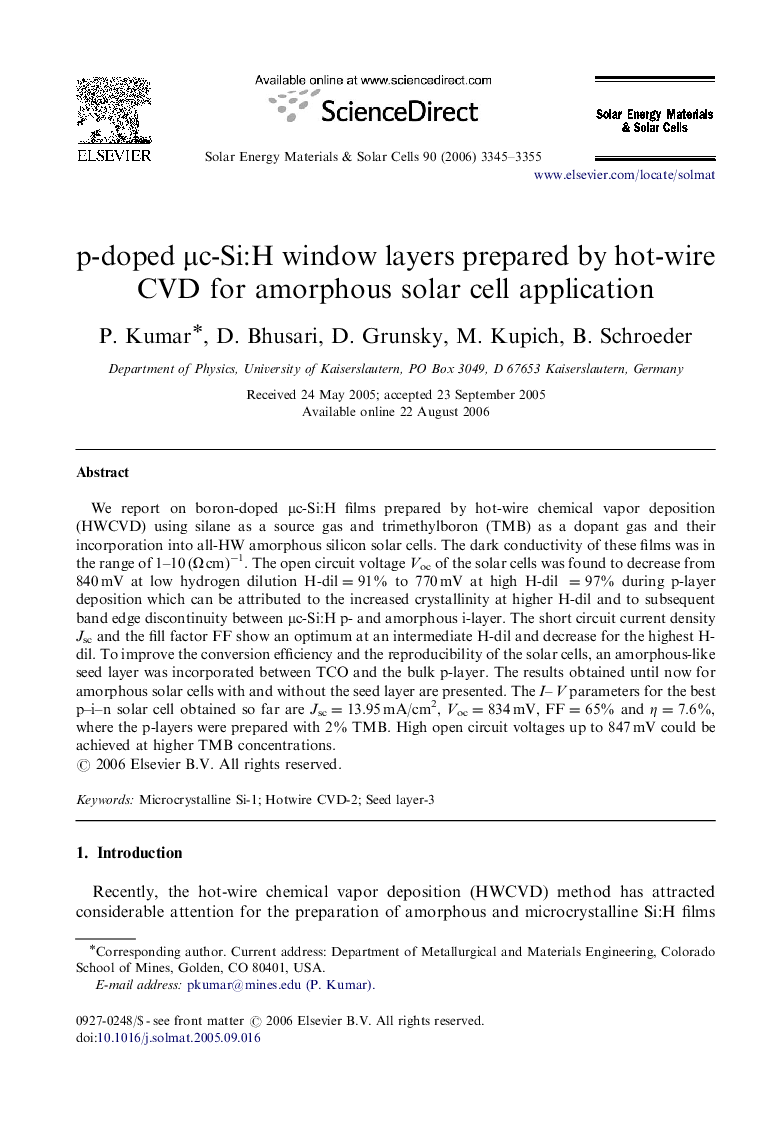| Article ID | Journal | Published Year | Pages | File Type |
|---|---|---|---|---|
| 80579 | Solar Energy Materials and Solar Cells | 2006 | 11 Pages |
We report on boron-doped μc-Si:H films prepared by hot-wire chemical vapor deposition (HWCVD) using silane as a source gas and trimethylboron (TMB) as a dopant gas and their incorporation into all-HW amorphous silicon solar cells. The dark conductivity of these films was in the range of 1–10 (Ω cm)−1. The open circuit voltage Voc of the solar cells was found to decrease from 840 mV at low hydrogen dilution H-dil=91% to 770 mV at high H-dil =97% during p-layer deposition which can be attributed to the increased crystallinity at higher H-dil and to subsequent band edge discontinuity between μc-Si:H p- and amorphous i-layer. The short circuit current density Jsc and the fill factor FF show an optimum at an intermediate H-dil and decrease for the highest H-dil. To improve the conversion efficiency and the reproducibility of the solar cells, an amorphous-like seed layer was incorporated between TCO and the bulk p-layer. The results obtained until now for amorphous solar cells with and without the seed layer are presented. The I–V parameters for the best p–i–n solar cell obtained so far are Jsc=13.95 mA/cm2, Voc=834 mV, FF=65% and η=7.6%, where the p-layers were prepared with 2% TMB. High open circuit voltages up to 847 mV could be achieved at higher TMB concentrations.
